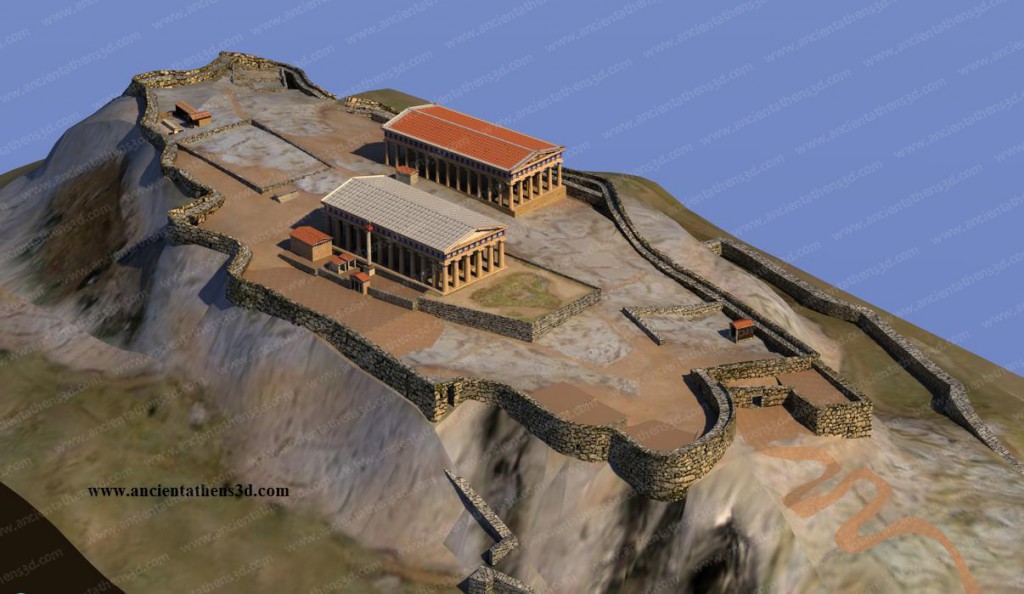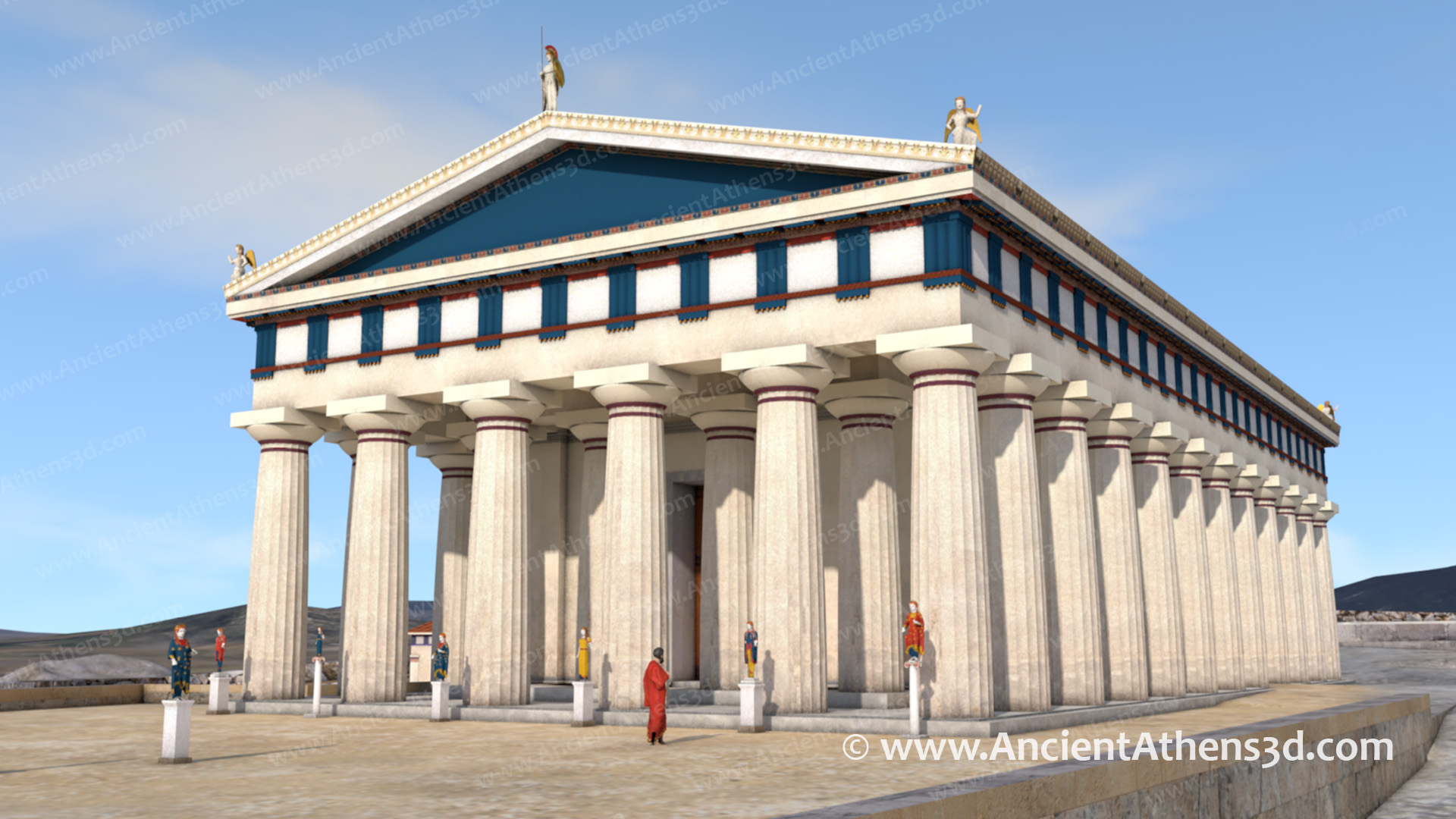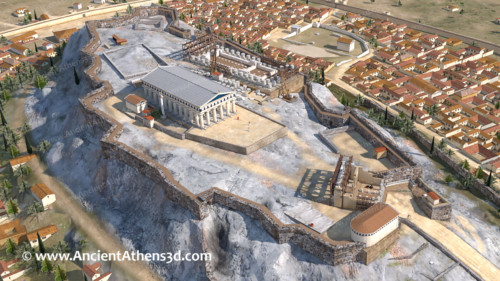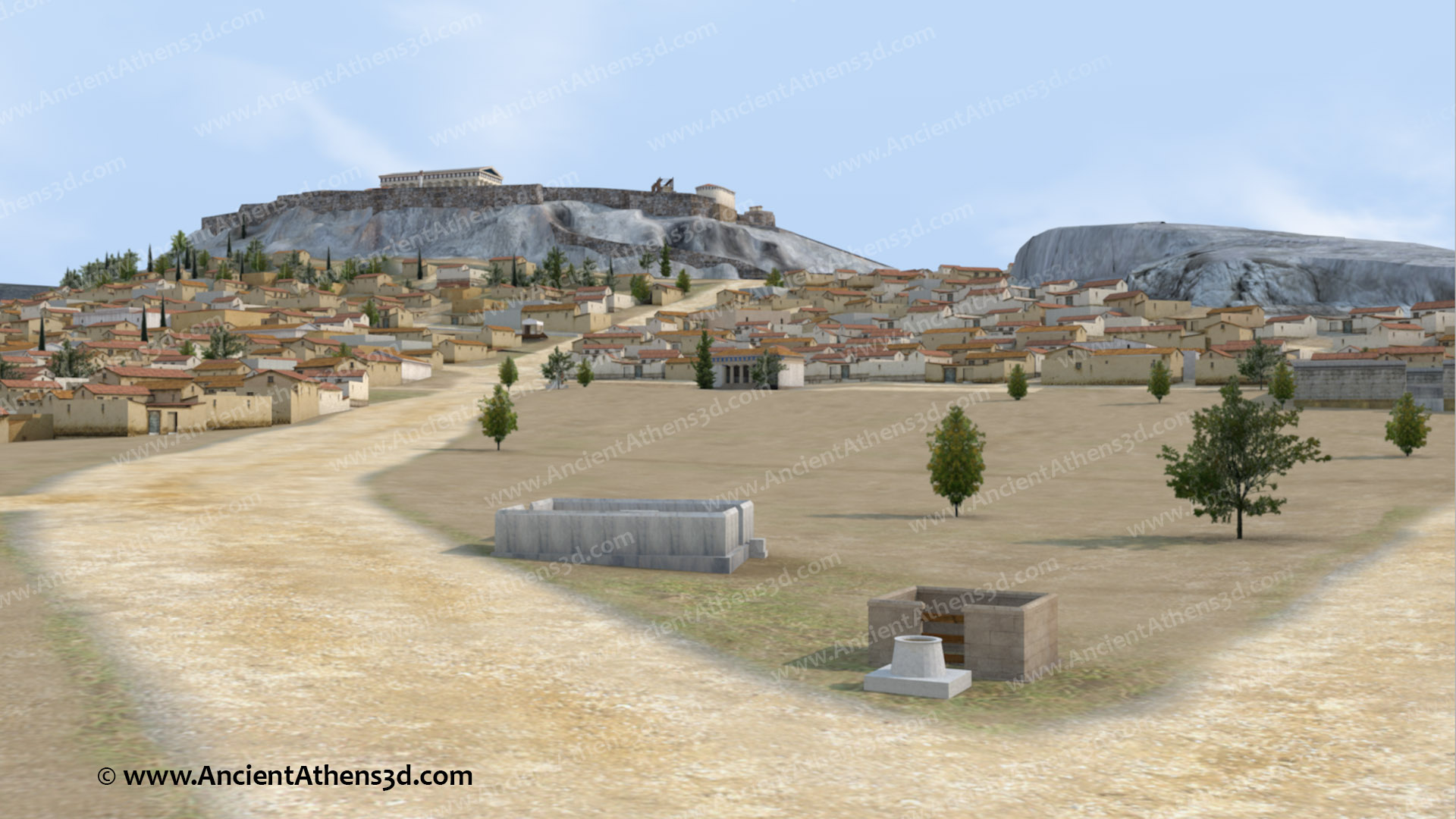Archaic Acropolis of Athens 600-480 BC
In archaic period the Acropolis had been turned into a place of worship and all administrative functions and residences had been moved to the city around the hill. On the Acropolis the cults of gods and heroes were established and the surface was divided into sanctuaries. In time, the first small temples were replaced by larger stone ones that reflected the power of Athens, as it became one of the most powerful city-states in the Greek world.
- General view of the Acropolis around 520 BC. with the two temples of Athena. The temple on the right is the first large one built in 560 BC. Next to it, with a marble roof, is the “Archaios Neos”.
The Acropolis of Athens in 520 BC
The first large, monumental temple was built around 570-560 BC at the place where the Parthenon stands today. This temple was known as "Hecatompedon" due to its length (100 feet-“podes”). It is also sometimes known as the "Archaic Parthenon". The temple was dedicated to the goddess Athena Parthenos, patroness of the city. Its pediments were adorned with sculptures depicting lions and mythical scenes. It was a Doric, peripteral, hexastyle temple made of stone from Piraeus (Aktite stone).
The second large temple was built in 520 BC a little further north than the previous one. This is also known as the "ancient temple" and was dedicated to Athena Polias. It replaced an older (8th-7th century BC) smaller temple of Athena located at the same place. Its pediments were adorned with marble sculptures depicting the Battle of the Giants (Gigantomachy).The Acropolis during the Persian Wars (480 BC)
After the battle of Marathon in 490 BC and with the rise of the Democracy, the "Hecatompedon" temple, was demolished for unknown reasons and in its place began the construction of the first temple made of marble. This temple remained unfinished as the second period of the Persian Wars started. In its place (on the same foundations and with many of the same architectural members) the Parthenon of classical times was later built. The first Propylaea were also constructed at that time, which also remained unfinished, as well as the first temple of Athena Nike, the foundations of which are still preserved below the classical temple. Also, the Mycenaean wall was repaired. All the buildings, including the city, were destroyed in September 480 BC and in June 479 BC by the Persians.
| Special thanks to prof. Chrysanthos Kanellopoulos for providing guidance for this reconstruction |




















